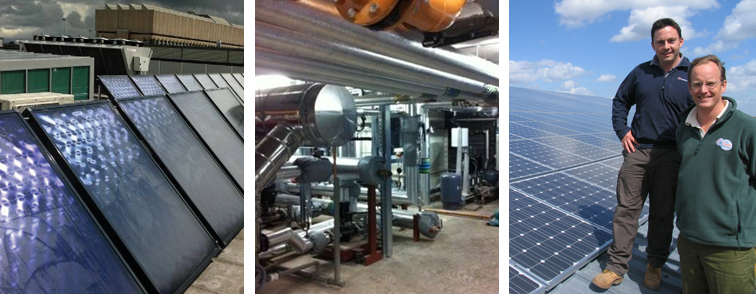
Moreton Hall School - Shropshire

“The examinations officer said the new lights are a big improvement on the previous ones and the badminton club has reported that it is much easier to see the shuttlecock”
Ian Davies, Moreton Hall School
The Project
Moreton Hall is a top independent school, based in Shropshire. As a high achieving school, the ongoing development plan focuses on ways to enhance the learning environment and ensure pupils are given every opportunity to succeed.
The school sports hall is a building in use every day, both for sporting events and also examinations and functions. High quality lighting is essential in this environment, not only to ensure accuracy when playing sport but also to provide optimal exam conditions.
Previous lighting consisted of 400Watt high pressure sodium lamps, with magnetic ballasts, in low bay fittings. The correlated colour temperature and S/P factor of such lighting was extremely poor, giving an orange glow which is only 65% effective for the human eye. Combined with the low frequency ballast, which causes flicker or shimmer, the lighting was not ideal for either sports players or exam candidates.
The lights were left switched on even when the hall was not in use, wasting electricity and maintenance of the lamps was expensive. With only one lamp per fitting, light levels would suffer in the event of a lamp failure.
The Solution
TGE Group carried out a review of the lighting in the Sports Hall and prepared a Relux simulation of the hall in order to determine the best new lighting system to install. After comparing various options, including LED variants, results showed that the best solution would be new Tamlite Hilux luminaires, with T5 high output lamps and high frequency electronic ballasts. This system delivers flicker-free ‘cool white’ light to College Badminton standard.
To ensure maximum electricity savings, TGE Group designed the new system to offer both full brightness, for sports, and half brightness for non-sporting uses such as exams. A powerful Ex-Or occupancy sensor was incorporated to switch off the lights automatically, after the hall is vacated.
Both the sensors and luminaires are designed to withstand ball strikes, to prevent ‘accidental’ damage to the system. T5 lamps last longer than the old SONs, but cost much less to buy and there would be four lamps in each fitting. As a result, light levels will not be adversely affected in the event of a failure. This means that maintenance can be planned in future and carried out en mass at a substantially lower cost than before.
“The multiple uses of this building demanded both flexibility, in terms of light level, and greater reliability, as the lights are difficult to reach. We therefore wanted to install a system which will require less maintenance than the old one, whilst guaranteeing superior quality of light for all users and offering significant electricity savings.” Ian Clifford, TGE Group.
Energy Savings
The new lighting should reduce electricity use by around 64%, resulting in a 11 tonne reduction in CO2 emissions annually and a cash saving of around £2,300 a year on combined electricity bills and maintenance.
Because all the new lighting meets the ETL criteria for high efficiency lighting units (HELUs), this project also qualifies for 100% First Year Capital Allowance, under the DECC/HMRC sponsored Enhanced Capital Allowance (ECA) scheme. Depending on corporation tax rates, this can speed up project payback by 20 to 28%.
Visit https://etl.decc.gov.uk/etl/site/about.html for further information.
@TGEgroup
 Commercial
Commercial Private sector
Private sector Residential
Residential







